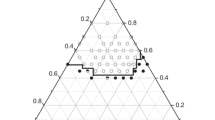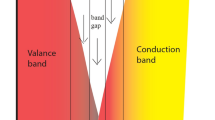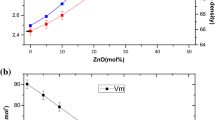Abstract
Tin phosphate glasses in the SnO–P2O5 binary diagram have been prepared by using a domestic microwave-heating device. Microwaves provide an extremely facile and automatically temperature-controlled route to the synthesis of glasses due to the specific dielectric properties of each chemical composition. Typical melting time is no longer than 10 min, limiting the oxidation of Sn2+ and the melt can be quenched into glass. The glass transition temperature increases with the SnO content confirming the depolymerization of the vitreous network, as expected by the relative fraction of the different Qn structural units deduced from NMR experiments. Concerning the mechanical properties, the Vickers hardness and the fracture toughness decrease while the thermal expansion coefficient and the different elastic moduli remain constants. These results confirm that those characteristics are not very sensible to structural considerations. On the contrary, the chemical durability of Sn2P2O7, determined from the weight loss method, is 300 times higher than that of Sn(PO3)2. Furthermore, Sn2P2O7 is the only glass composition that exhibits a devitrification phenomenon leading to the low-temperature phase of the crystalline tin(II) pyrophosphate.










Similar content being viewed by others
References
Donald IW (1993) J Mater Sci 28:2841. doi:10.1007/BF00354689
Hudecek J (1991) Engineered materials handbook, vol 4. ASM International, Metals Park, p 1069
US Federal Registry (1979) 44:60980
Morena R (2000) J Non-Cryst Solids 263 & 264:382
Holland D, Howes AP, Smith ME, Hannon AC (2002) J Phys Condens Matter 14:13609
Vaidhyanathan B, Ganguli M, Rao KJ (1994) J Solid State Chem 113:448
Vaidhyanathan B, Prem Kumar C, Rao JL et al (1998) J Phys Chem Solids 59:121
Ghussn L, Martinelli JR (2004) J Mater Sci 39:1371. doi:10.1023/B:JMSC.0000013899.75724.e1
Massiot D, Fayon F, Capron M, King I, Le Calvé S, Alonso B, Durand J-O, Bujoli B, Gan Z, Hoatson G (2002) Magn Reson Chem 40:70
Blessing GV (1990) Dynamic elastic modulus measurements in materials, ASTM STP 1045. ASTM, Philadelphia
Lippma E, Magi M, Samoson A, Engelhardt G, Grimmer A (1980) J Am Chem Soc 102:4889
Van Wazer JR (1958) Phosphorus and its compounds. Interscience, New York
Bekaert E, Montagne L, Delevoye L, Palavit G, Revel B (2004) CR Chim 7:377
Day DE, Wu Z, Ray CS, Hrma P (1998) J Non-Cryst Solids 241:1
Chernaya VV, Mitiaev AS, Chizhov PS, Dikarev EV, Shpanchenko RV, Antipov EV, Korolenko MV, Fabritchnyi PB (2005) Chem Mater 17:284
Author information
Authors and Affiliations
Corresponding author
Rights and permissions
About this article
Cite this article
Hémono, N., Chenu, S., Lebullenger, R. et al. Microwave synthesis and physical characterization of tin(II) phosphate glasses. J Mater Sci 45, 2916–2920 (2010). https://doi.org/10.1007/s10853-010-4283-0
Received:
Accepted:
Published:
Issue Date:
DOI: https://doi.org/10.1007/s10853-010-4283-0




